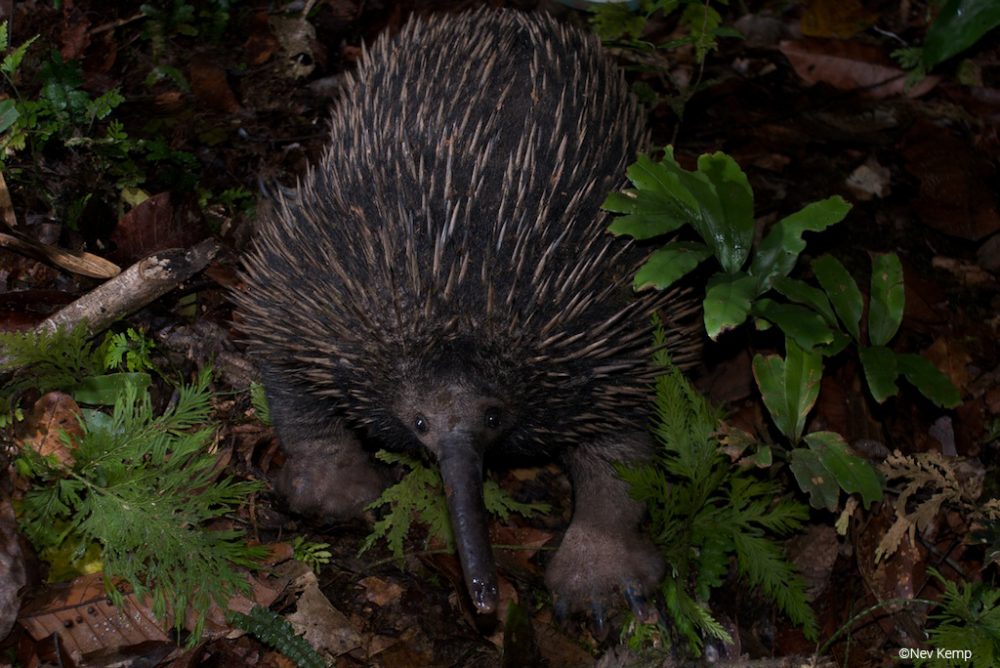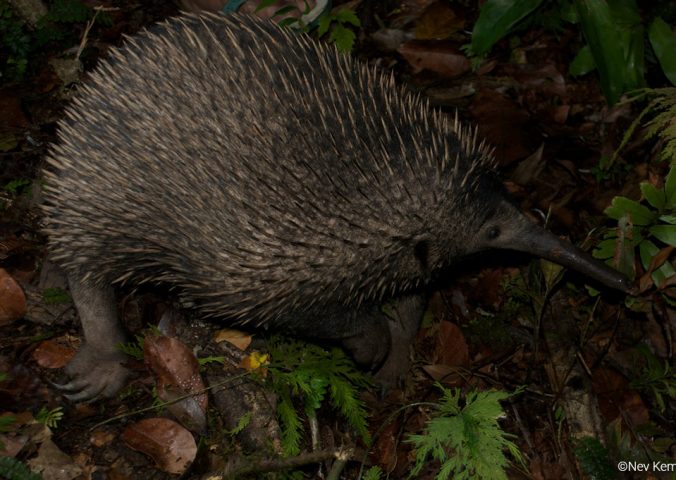About
The western long-beaked echidna is one of the most mysterious mammals on Earth.
It is one of only five remaining monotreme species, an ancient clade of mammals that includes two other long-beaked echidna species, along with the short-beaked echidna and duck-billed platypus. The western long-beaked echidna is the largest monotreme. Like all mammals, monotremes have fur and produce milk to nourish their young, but uniquely, these mammals lay eggs rather than giving birth to live young.
Fossil evidence indicates that monotremes have changed very little during the last 100 million years, although both the echidnas and the platypus are highly specialised for different lifestyles, diverging around 46 million years ago. Occurring only in the far west of the island of New Guinea, the poorly-known western long-beaked echidna may be on the verge of extinction. It is threatened by human hunting, which uses trained hunting dogs to track down the echidna’s daytime burrow. It is also threatened by habitat loss which is being driven by mining, agriculture and logging.
- Order: Monotremata
- Family: Tachyglossidae
- Population: Unknown
- Trend: decreasing
- Size: 45-77.5cm
EDGE Score
Distribution
Largely restricted to the Vogelkop Peninsula, in the far west of the island of New Guinea (West Papua Province, Indonesia). The species may also be present on the Indonesian islands of Batanta and Waigeo.
Habitat and Ecology
This species inhabits tropical hill forests to upper montane forests. Little is known of their ecology, though it is thought to be nocturnal. They spend the day time resting in shallow burrows or hollow logs, and forage in the forest litter at night for earthworms to eat.

